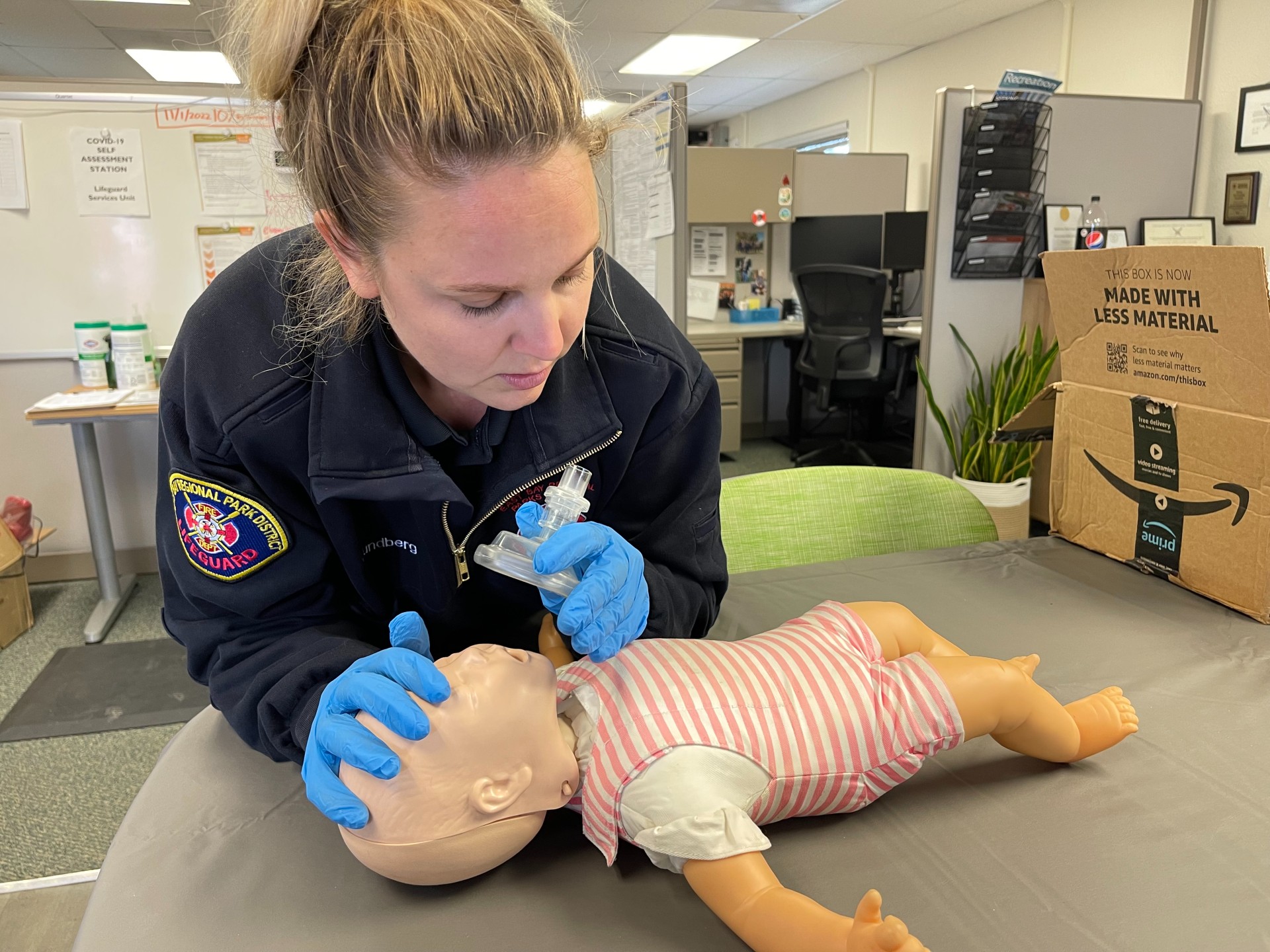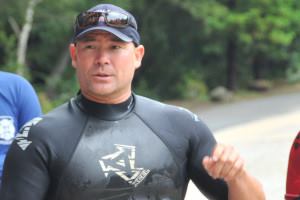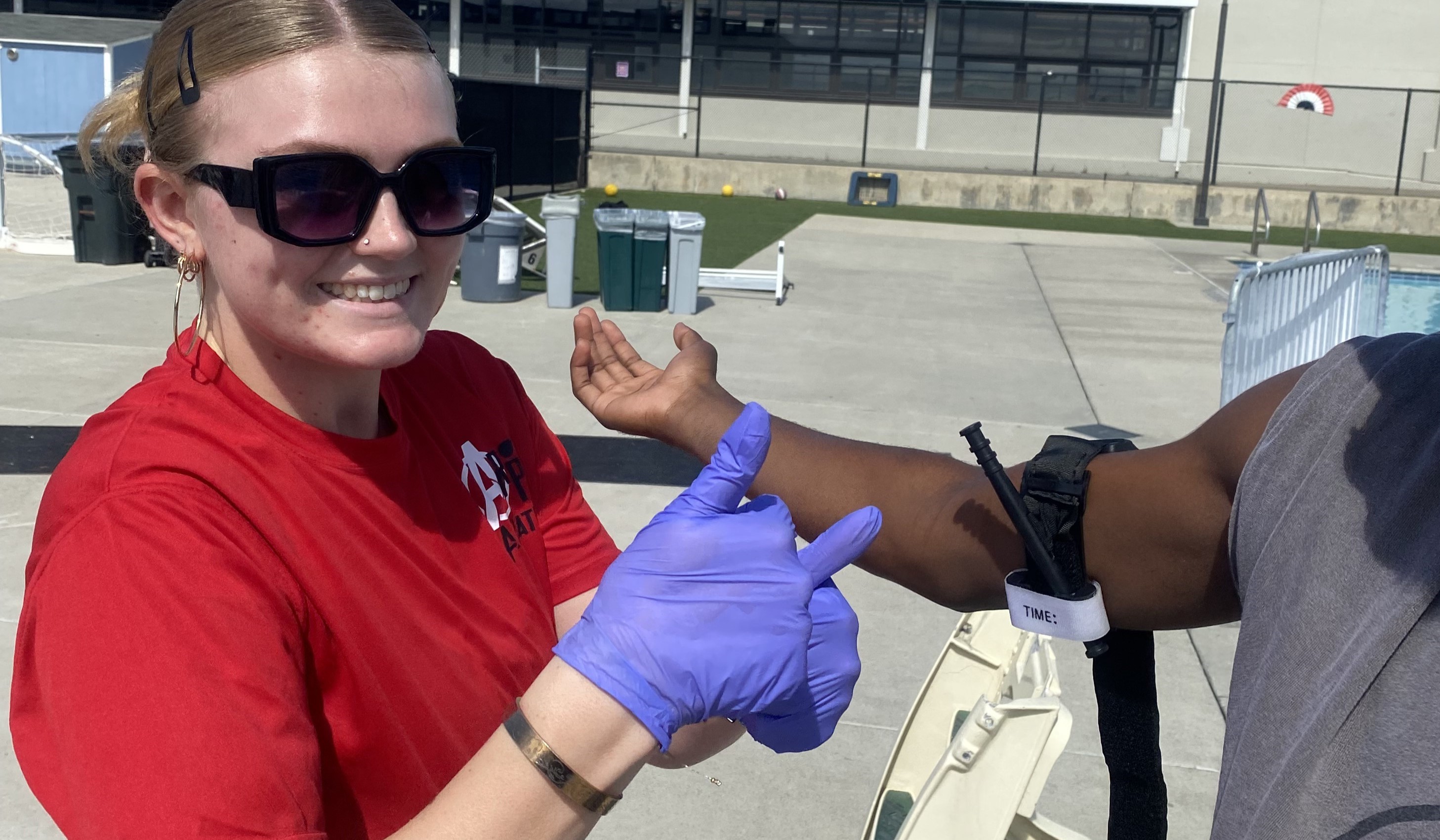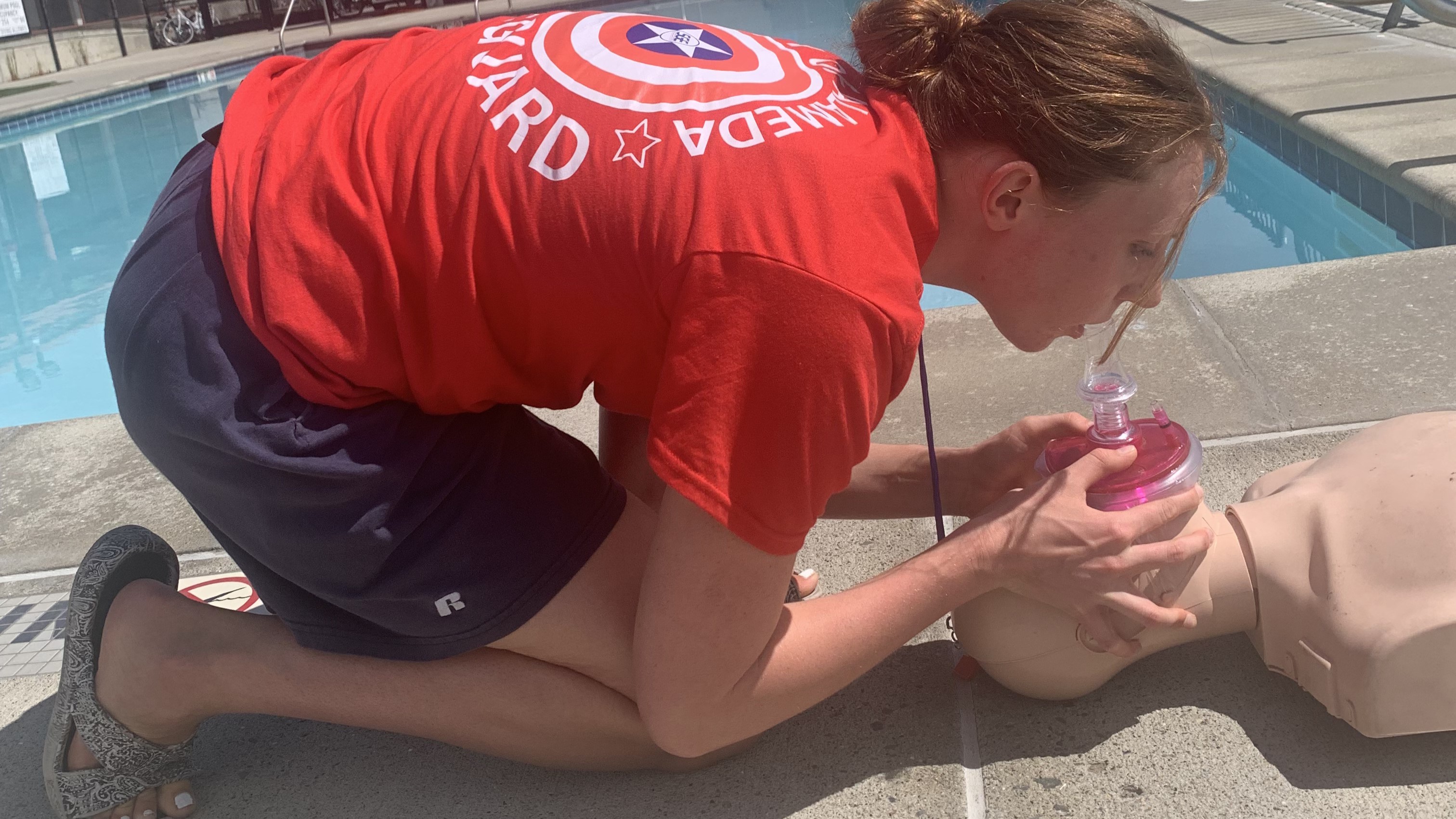To most lifeguards, providing patient care to an infant is scary.
Infants are small, squishy, a bit smelly and fragile. Up until now, most of your teenage and young adult lifeguards have had little interaction with babies. As the in-service trainer, your job is to get your staff comfortable and proficient in performing their rescue and patient care skills on infants.
To guarantee an effective in-service, make sure your infant manikins have working lungs and that all lifeguards have access to appropriate resuscitation masks and BVMs.
AIRWAY MANEUVER DRILL (skill refresher): Pair up your lifeguards and switch primary rescuer positions when it is necessary. Manikins will be used for this drill. The primary lifeguard is positioned 10 feet away from the infant. Spinal injury is not suspected.
Objective: Move quickly to the infant and open the airway.
Go through each maneuver:
Lateral: Head-tilt/ Chin-lift
Cephalic: Jaw-thrust with head extension
Cephalic: Jaw-thrust without head extension
Timing goal: 3-7 seconds for each maneuver
MASK SEALING DRILL (skill refresher): Pair up your lifeguards and switch the primary lifeguard position when necessary. Manikins will be used for this drill. The primary lifeguard is situated 10 feet away from the infant. Spinal injury is not suspected. Resuscitation and BVMs will be used.
Objective: Move quickly to the infant, move the infant to an elevated surface (if possible), effectively seal the mask, and provide ventilations.
Go through each maneuver:
Sealing a resuscitation mask on an infant, provide ventilations, one every 3 seconds
Sealing a BVM mask on an infant, provide ventilations, one every 3 seconds
Sealing a resuscitation mask on an infant, provide 3-5 ventilations, then transition to a BVM while maintaining an open airway, and provide 3-5 ventilations
Lifeguards should provide at least 3-5 ventilations to verify that they have an effective seal on the victim.
Timing goal: 15-30 for each maneuver
PRIMARY ASSESSMENT DRILL (skill refresher): Pair up your lifeguards and switch primary rescuer position when necessary. Manikins will be used for this drill. The primary lifeguard is 10 feet away from the infant. Spinal injury is not suspected.
Objective: Move quickly to the infant, move the infant to an elevated surface (if possible), and perform a primary assessment.
Go through each maneuver:
Primary assessment, determine the infant has a pulse and is breathing
Primary assessment, determine the infant has a pulse and is not breathing
Primary assessment, determine the infant has no pulse and is not breathing
Timing goal: 15-20 seconds for each maneuver
UNINTERRUPTED VENTILATIONS DRILL: Pair up lifeguards. Manikins will be used for this drill. Resuscitation mask and BVMs should be available. The lifeguards should be 10 feet away from the infant. Spinal injury is not suspected.
Objective: Move quickly to the infant, move the infant to an elevated surface (if possible), and perform a primary assessment, determine that the infant has a pulse but is not breathing. Effectively seal the mask and provide ventilations for 1 minute.
Go through each maneuver:
Provide ventilations with a resuscitation mask for 1 minute
Provide ventilations with a BVM mask for 1 minute
Provide ventilations with a resuscitation mask for 30 seconds, then transition to a BVM while maintaining an open airway, and provide ventilations for 30 seconds
ONE- AND TWO-RESCUER CPR DRILL (skill refresher): Pair up your lifeguards and switch the primary rescuer position when necessary. Manikins will be used for this drill. Spinal injury is not suspected.
Objective: Move quickly to the infant, move infant to an elevated surface (if possible), and perform a primary assessment, determine the infant has no pulse and no breathing, begin CPR.
Go through each maneuver:
• One-rescuer CPR (resuscitation mask)
• One-rescuer CPR, transition to two-rescuer CPR (resuscitation mask, transition to BVM)
• Two-rescuer CPR (BVM)
Timing goal: 60-90 seconds for each maneuver
VENTILATION/CPR SCENARIOS: Pair up your lifeguards. Manikins will be used for this drill. Resuscitation mask and BVMs should be available. The lifeguards should be positioned 10 feet away from the infant. Spinal injury is not suspected.
Objective: Move quickly to the infant, extricate them from the water when necessary, move the infant to an elevated surface if possible, perform a primary assessment, determine the infant’s (breathing, not breathing, no pulse, etc.), and provide the appropriate care. A proctor will provide prompts throughout the scenario.
Go through each scenario:
An infant is located on land, not breathing but has a pulse. No spinal injury is suspected. Provide ventilations for 1 minute with a resuscitation mask, then transition to ventilations with a BVM when a second lifeguard arrives for 1 minute more.
An infant is located on land, not breathing and has no pulse. No spinal injury is suspected. Provide one-rescuer CPR for 1 minute with a resuscitation mask, then transition to two-rescuer CPR with a BVM when a second lifeguard arrives for 1 minute more.
An infant is pulled from the water, not breathing but has a pulse. No spinal injury is suspected. Provide ventilations for 1 minute with a resuscitation mask, then transition to ventilations with a BVM when a second lifeguard arrives for 1 minute more.
An infant is located on land, not breathing and has no pulse. No spinal injury is suspected. Provide one-rescuer CPR for 1 minute with a resuscitation mask, then transition to two-rescuer CPR with a BVM when a second lifeguard arrives for 1 minute more.
MISTAKES TO LOOK FOR
You’ll need to assist your staff in understanding the differences between an infant and child. Watch for these mistakes:
• Moving an infant from the ground to an elevated surface;
• Opening an infant’s airway too far;
• Exerting too much downward force when sealing a mask on an infant;
• Over-ventilating the lungs when ventilating
• Checking for a pulse at wrong location
• Inaccurate compression depth during CPR
• Inaccurate compression technique
• Inaccurate compression rate
• Incorrect compression ratio for one-rescuer or two-rescuer
The chart above shows the time breakdown for the 30-minute in-service. Remember that, to keep your 30-minute in-service compact and effective, equipment should be set up and ready to use. Make sure your proctors are familiar with the scenarios and prepared to provide engaging feedback.
As always, talk less and encourage faster skill repetition for your lifeguards.
Good luck and keep training.



